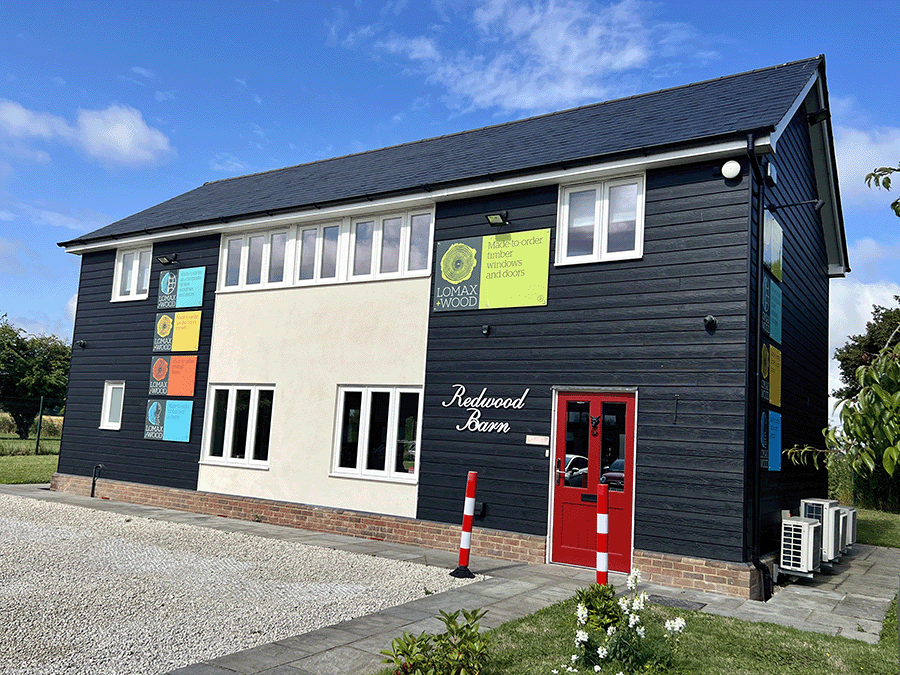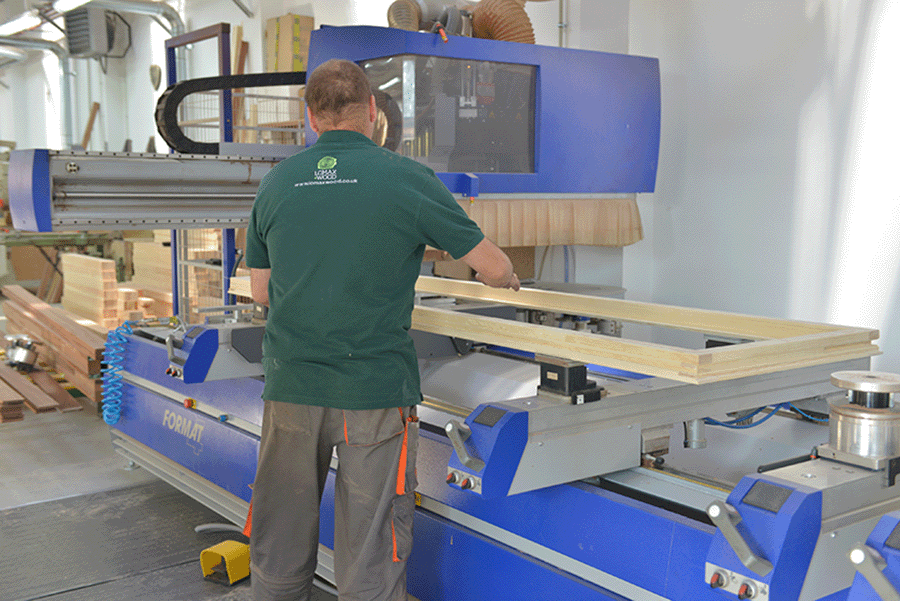Replacement Sash Windows for Period Homes
- 23 May 2024|
- News
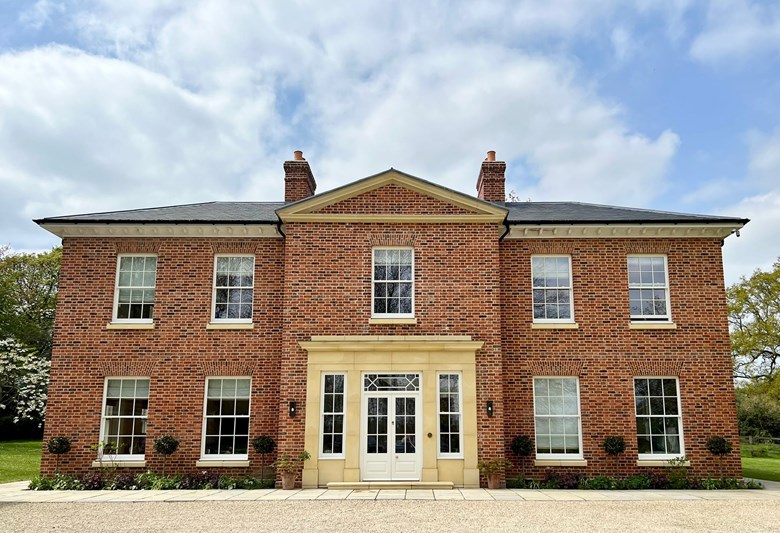
Replacement Sash Windows for Period Homes Period sash windows are a common feature in homes large and small from the Victorian, Georgian and Edwardian eras. They are aesthetically superb, and they are famed for their longevity. Nothing lasts forever, and if you have a period home, you might consider replacing the Victorian or Georgian sash windows.
If so, choosing the right product that replicates the original period sight lines is important to maintaining your property’s period character. This is especially important if your property is listed or you live in a conservation area—but more on that later.
At Lomax + Wood, we have years of experience helping clients choose the right windows for Victorian houses or those built in the Georgian or Edwardian periods on either side.
A Brief History of Sash Windows
The first wooden sash windows appeared in Britain almost 400 years ago. The oldest surviving examples date back to the 1670s, and you can see them for yourself at Ham House in Richmond on Thames. However, sash windows really became popular as a key architectural feature on homes during the Georgian, Victorian, and Edwardian eras, which collectively cover the period from 1714 to 1918.
Sash windows conveyed prosperity and grandeur. It shows that wanting to show off in front of the neighbours is a recent invention. But they were about substance, as well as style. Back then, it was extra important that windows let in plenty of natural light, provided protection from the elements in cold weather and could open wide to ventilate the home when necessary. Sash windows scored high and performed better than the conventional casement windows on all counts.
Selecting the Right Sash Window Style for Your Period Property
When it comes to replacing period sash windows, the first thing to be clear about is the era in which your period property was built. We said a moment ago that sash windows were the go-to choice for a period of about 200 years. It should come as no surprise that the windows for a Georgian house built in 1750 will differ from the Edwardian window styles of the 1900s. And then Victorian sash windows have their unique characteristics, too.
There is not a rule book. Every period property has its own quirks, and some design trends overlap periods. Also, some properties were renovated and modernised over the years, so a Georgian property might have Edwardian characteristics if it was “modernised” in the 1900s. Keeping those points and caveats in mind, we can identify some basic trends from each of the eras.
Lomax + Wood will replicate the existing period sight lines which is essential to maintain the character of the property.
Georgian Sash Windows
Sash windows from the Georgian period typically featured complex grid patterns, often referred to as six-over-six windows and eight-over-eight windows. Glazing bars were often used to divide an opening sash into a grid system into which smaller square panes were installed. This was to allow for the technology of the time, as larger glass panes were very difficult to make.
Despite the technological limitations of the day, Georgian sash windows were highly distinctive, and the detailed, symmetrical style looks as charming today as ever.
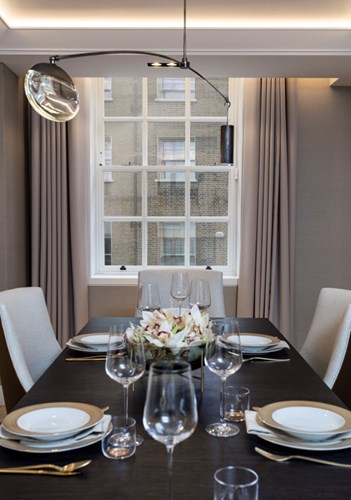
The other point to remember about the Georgian period was that the window tax was in place, and it remained so until 1850. Having a big house with many windows was like parading up and down the street shouting how wealthy you were, so this led to some interesting design choices during the 1700s!
Victorian Style Sash Windows
By the time Queen Victoria was on the throne, glass-making methods had improved dramatically. Larger panes of glass were used, with fewer glazing bars that typified Georgian designs. During the Victorian period, a fashionable style was to have a lower sash with one or two large panes of class and a top sash with smaller panes.
Another significant development during this period was that sash windows were used in a wider variety of houses. Homeownership became accessible to the middle classes, and smaller houses, including terraces in towns and cities, started to spring up. Initially, the window tax was still in place, and this was a more important consideration for the masses than it had been for the wealthy homeowners of the Georgian period.
When the window tax was abolished in 1851, architects had far more freedom and started to build what we tend to think of today as “Victorian townhouses.” These were family-sized homes with large sash windows that took up almost an entire wall in each room, and thousands survive in towns, cities and suburbs to this day.
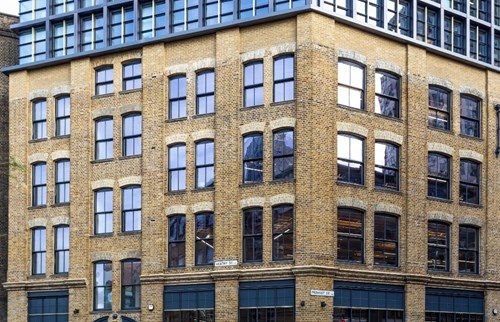
Edwardian Style Windows
Windows for an Edwardian house are similar to those of the Victorian era, at least as far as their use in the towns and suburbs was concerned. They still favoured a lower sash with one or two larger panes, while the top panes featured increasingly intricate designs and patterns.
A feature of this period was that the wealthy started to move out of the cities, and architects were busy designing luxury properties in villages and rural hideaways. With these, there was something of a return to the Georgian architectural cues of years gone by, with lavish and ornate bespoke designs. With better technology available, they could really go to town, including features like stained glass panels to make their client’s properties stand out.
Special Features on Sash Windows
Now, we have a broad understanding of the different styles and how sash windows evolved over the architectural periods of the past two or three centuries. But there are also some extra features worth thinking about:
• Cottage bar design – we have focused so far on larger homes, but some period cottages still have their original sash windows in place. Cottage bar design is something you might see in a period countryside cottage. The upper sash is usually smaller than the lower sash, and it often features intricate patterns and designs that add charm and character to the country cottage it adorns.
• Sash horns – as the name suggests, sash horns are large protrusions that are added to the bottom of the upper window frame on each side. They can be ornately shaped and were hand-carved to look like horns or any other shape. Their original purpose was to add rigidity to the frame and stop it from twisting. With modern designs, they are no longer needed to serve any real function and are for decorative purposes only.
• Glazing bars – vary enormously in mould and width and it is important to remember that they were not all fine. The width depended on the period and skills of the joiner.
Box Sash Windows vs Spring Sash
The difference between different sash windows is about more than external aesthetics. If you examine their inner workings, you will see that there are two basic types.
The traditional timber sash windows that were originally fitted in your period home all those years ago are called sliding or box sash windows. They open and close using a system of cords, pulleys and counterbalancing weights attached to each opening sash. They make it easy to open and close them and also hold them firmly in the desired position.
A more modern alternative is a spring sash or spiral sash window. This mechanism uses a tensioned spring instead of box cords and weights to carry out the same function.
We will compare and contrast these two types of sash windows in more detail elsewhere. Suffice it to say that both are available from Lomax + Wood. A traditional box sash is essential when period originality is necessary. In contrast, a spring sash can be a good alternative if there are no such constraints, as it is has a slimmer frame section and therefore suitable for a wider range of structural details.
Replacing Timber Sash Windows in Conservation Areas and Listed Buildings
Period properties are often subject to very specific rules and restrictions relating to preservation. This is particularly the case if your property is listed by English Heritage or if you reside in a conservation area.
Let’s start with Listed buildings. If you live in a Grade-2 listed building and you want to replace the windows, you will need to make an application to your local council. Obviously, we cannot tell you with certainty how they will respond, but typically, consent will be granted if the following conditions are met:
• The works are necessary.
• The works do not have any adverse effect on the special architectural or historical interest of the building or its setting.
• The works are appropriate in terms detailing of design, scale, and materials.
• The works minimise the loss of the historic fabric of the building.
In other words, your best chance of success is to ensure that the replacement windows are like-for-like in terms of their functionality and design. The “necessity” point is an interesting one. Until recently, this meant you would only get consent if the existing windows were rotting or falling out of the wall. Today, the comparative thermal efficiency of a new sash window from Lomax + Wood compared to something 100 years old or more provides a compelling argument that the work is necessary even if the existing window is still in good functional condition.
At Lomax + Wood, we can design a bespoke solution to help you maximise your chances of gaining consent. Please take a look at our case studies to see examples of clients we have helped with bespoke solutions for their period properties.
If you live in a conservation area, you will need to find out about the exact rules and design restrictions that are in place. Typically, these will be broadly similar; replacement windows should be in keeping with the originals. You might have more leeway to install replacement windows with different designs if the current windows are not the originals. Again, you should always speak to your local planning department to check what you may and may not do before you start ripping out any windows. The issue with conservation areas is that each has its own specific rules. For example, glazing design might be strictly stipulated in one and not in another.
Don’t Forget About Building Regulations
Wherever you live, you also need to consider Building Regulations. Since 2002, all replacement glazing has been covered by Building Regulations, and to add to the joy, areas such as thermal efficiency have been tightened considerably in the new revision that comes into force in April 2024.
The good news is that if Lomax + Wood fits your windows, we automatically cover compliance. All our windows are constructed to comply with the new 2024 regulations, and our sash windows have set a new standard in thermal efficiency that is well within the stipulated limits. When the work is completed, we will hand you a certificate confirming compliance, which you can share with anyone who asks for it

